Customer engagement isn’t just about getting your customers interested in your product. It’s about keeping them coming back for more.
Needless to say, you need to learn about your customers and their preferences if you want to keep them engaged with your brand.
This is where offline and online customer engagement comes into play. Companies need to look for online ways to compete with the synchronous nature of offline customer engagement.
So what is customer engagement, and how can you create an effective cross-channel customer engagement strategy? Continue reading for insights into real-world examples of offline and online customer engagement, or jump to our infographic below.
Table of contents:
- Customer Engagement Definition
- Online vs. Offline Customer Engagement
- Factors Affecting Cross-Channel Customer Engagement
- How to Create an Effective Cross-Channel Marketing Plan
- Examples of Offline and Online Customer Engagement
What is Customer Engagement?

Customer engagement is the connection between a customer and your brand. Effective customer engagement reduces friction between channels on the user journey to help build trust between a customer and brand.
Consumers are looking to brands to create a connected experience rather than one-off engagement. In fact, 66% of customers expect brands to understand their unique needs and expectations, and 76% expect tailored messages on each channel.*
So how can marketers turn a single touchpoint into a multi-channel customer journey? Brands need to create a cohesive omnichannel marketing experience, both online and offline.
Customer Engagement: Online vs. Offline
Online and offline customer engagement uses multiple channels to reach their target customers. At first glance, you may not see a reason to change your customer engagement campaigns between channels. Although you need a cohesive cross-channel strategy, you’ll realize that customer engagement tactics are very different in terms of execution.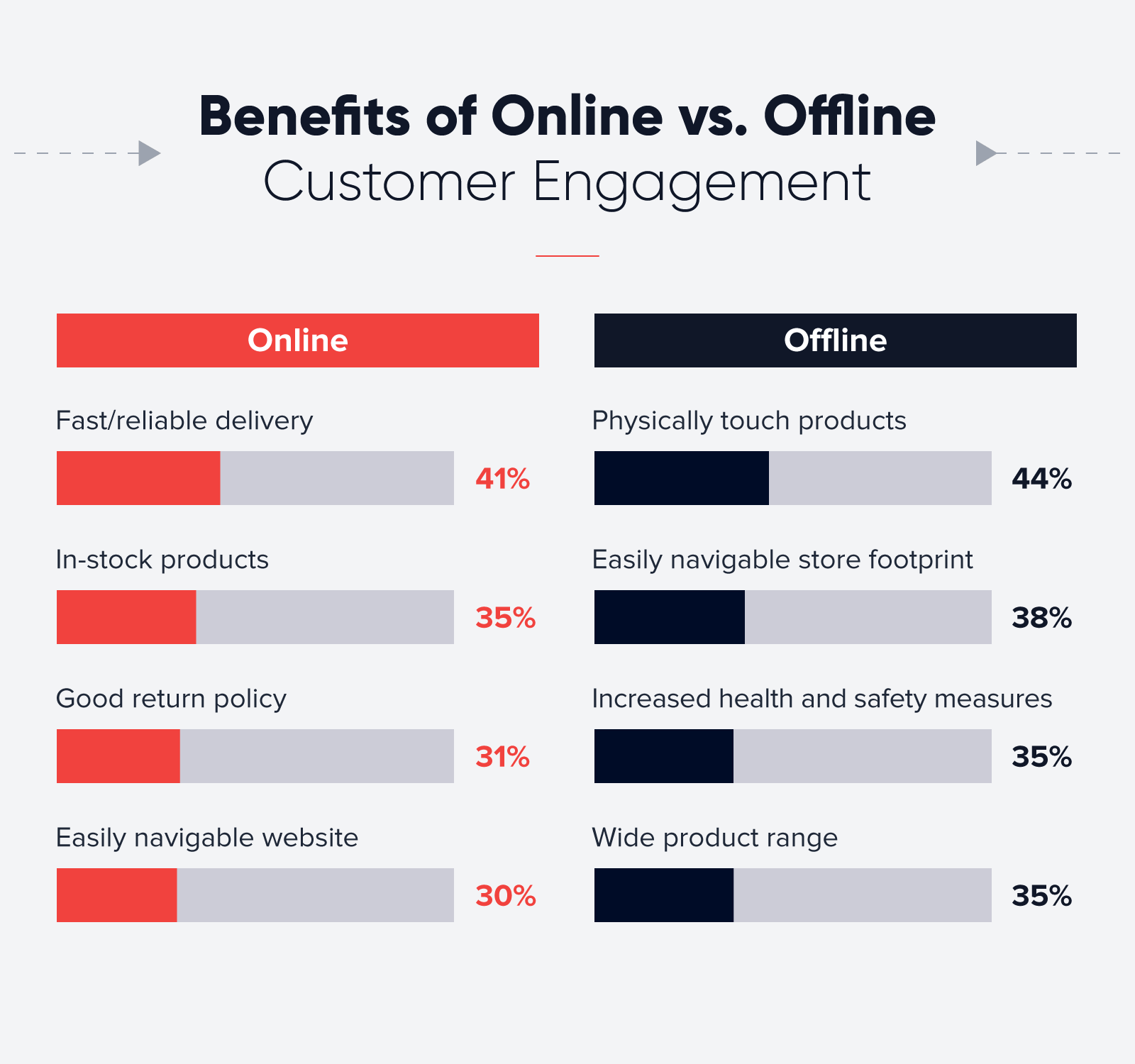
Online Customer Engagement
Online customer engagement refers to any online interaction you have with your customers through channels such as websites, emails, paid ads, social media, remarketing, and product packaging.
In 2021, ecommerce is expected to account for 15.5% of total worldwide retail sales.* With ecommerce taking center stage, marketers need to understand how to use online customer engagement to their advantage.
A recent PwC survey* found that the most important factors of online customer engagement are:
- Fast/reliable cross-channel delivery: 41%
- In-stock product availability: 35%
- Good cross-channel return policy: 31%
- Ability to quickly and conveniently navigate website: 30%
Compared to offline customer engagement, good online customer engagement helps brands build additional micro-touch points across the customer journey.
Offline Customer Engagement
While online channels have given marketers new reach, offline is the bread and butter of traditional customer engagement. Offline customer engagement creates a unique opportunity for brands to build relationships with customers in a way that’s difficult to replicate virtually — whether it’s crafting a positive first impression with a friendly salesperson or offering free Wi-Fi to in-store customers.
The PwC survey found that, among in-store shoppers, the most important attributes of offline customer engagement are:
- Ability to see/touch products: 44%
- Ability to easily navigate physical store: 38%
- Increased health and safety measures: 35%
- In-stock product range: 35%
The relationship between online and offline customer engagement is reflected by consumers’ preferences for cross-channel engagement opportunities, such as the 41% of consumers who prioritize cross-channel delivery and 31% who want a good cross-channel return policy.
What Affects Online and Offline Customer Engagement?
Creating a cohesive online and offline marketing experience isn’t as easy as setting a single strategy across all channels. Here are the main factors that differ between online and offline customer engagement.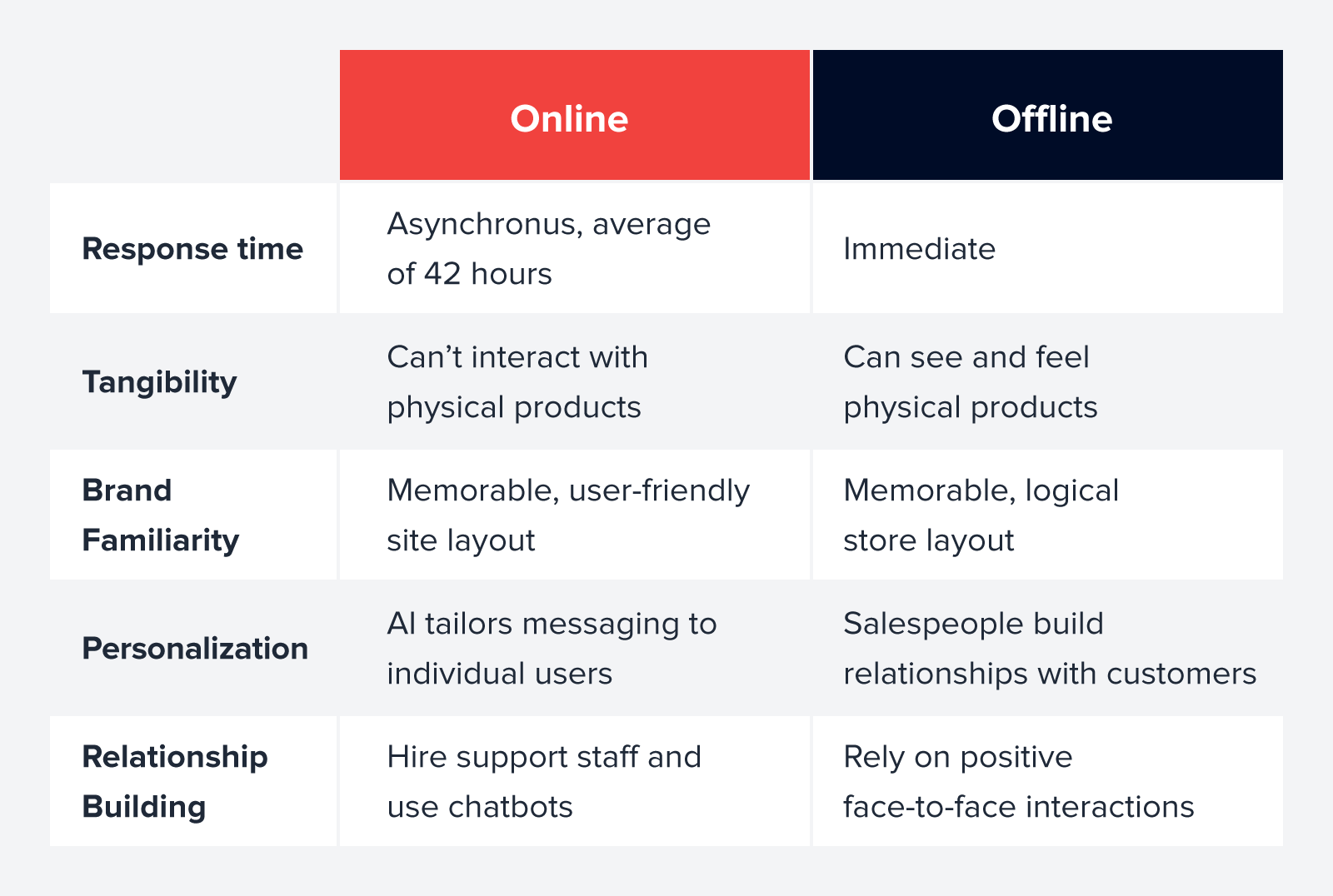
1. Response Time
83% of customers expect immediate responses when they contact a company.* Despite this, companies took an average of 42 hours to respond. Breaking it down further, 37% responded within an hour and 16% within one day.*
With in-person customer engagements, employees can respond to customer queries instantly. Meanwhile, online responses can be much slower. While methods like online chat and chatbots have the quickest average response time, options like social media and web forms average a response time of up to 24 hours.*
With offline retail, brands can rely on immediate response times from workers. Online brands can compete with this by improving response times using chatbots and larger support teams.
2. Tangibility
In stores, customers come to browse tangible items. When they can examine and try products in person, sales can be faster and more informed.
By contrast, customers can’t view the physical products on e-stores, so they may not be as confident in their purchases. To boost sales despite this limitation, companies can create generous return policies for online purchases.
3. Brand Familiarity
In person, a unique store layout and interaction with employees can help customers get a feel for the brand.
Online, companies can use a visual campaign builder to establish brand familiarity among new customers. They can also create a website design that is consistent with their in-person brand.
Across all channels, it’s important to maintain a recognizable and reliable brand identity.
4. Personalization
Thanks to the customizability of cross-channel customer engagement, shoppers can enjoy a personalized experience both in person and online. In a store, employees can answer customer queries and adjust the shopping experience to satisfy their needs.
Meanwhile, e-stores use algorithms to show products catered to customer preferences. Companies can also create personalized messages for customers to receive on their devices.
5. Relationship Building
In terms of building relationships with consumers, cross-channel customer engagement can come with some challenges. In a physical store, it’s much easier to build relationships through instant communication and rapport with sales personnel.
Although relationship building is more difficult online, companies can hire support staff to answer live chat queries.
How to Create an Effective Cross-Channel Marketing Plan
Engaging users across channels is easier said than done, especially since 86% of shoppers regularly use at least two channels.
Check out these tips to optimize for online and offline customer touchpoints.*
1. Unify Your Data
With customer touchpoints across various channels, many marketers fall prey to disorganized (and therefore, ineffective) data silos. In fact, according to Forrester, 39% of marketers struggle to integrate offline and online data.*
The best way to do this is with a customer data platform that aggregates your data into a single database to help you build a 360°-degree view of your customers.
2. Create Personas
As representations of your target customers, user personas are helpful for behavioral segmentation, or grouping your customers based on their actions. With aggregated data, you’re able to build a more holistic picture of customer consumption habits to personalize your messaging strategy.
While your first instinct may be to create as many user personas as possible, we suggest making only up to four personas. With too many personas, you may fall prey to an unfocused cross-channel strategy. Instead, using up to four personas will allow you to capture most of your target audience and hone in on their behavior and psychographics.
3. Identify Your Channels
Mobile messaging channels include in-app, push notifications, SMS, WhatsApp, app inboxes, and email. But customers don’t want to be bombarded with too many touchpoints across each channel.
For example, while SMS notifications have a sky-high open rate of 98%, SMS messaging for online customer engagement can backfire when:*
- They receive unsolicited messages: 25%
- There isn’t an opt-out option: 19%
- They receive too many notifications: 19%
- The messaging feels spammy: 18%
4. Create a Consistent Cross-Channel Brand Identity
Needless to say, a clear brand identity is essential for delivering a seamless customer experience. While you can’t control your brand image, your brand identity can set the tone for what your customers expect across all channels. Are you funny but not childish? Helpful but not overbearing?
Psychographic segmentation, or identifying specific psychological characteristics from your personas, can help you create a consistent cross-channel brand identity.
5. Tailor Channel Messaging
While your messaging should remain consistent across each channel, you don’t want it to stay exactly the same. For example, a graphic that may succeed on a visual medium like Instagram could flop when sent via SMS.
To tailor your channel messaging, focus on creating content that’s most useful for your user, not for pushing your brand forward.
6. Use Marketing Automation
By nature, offline customer engagement can’t be automated — that’s part of what makes it so personalized. When simultaneously dealing with online marketing channels, marketers personalize content for users and automate delivery — in a way that won’t make customers feel spoken to by a bot (even though, in reality, they are).
A good CRM system will help you optimize your campaign to enhance user engagement across various online channels.
Online and Offline Customer Engagement Examples
While some brands have excellent online customer engagement tactics and vice versa, few can seamlessly integrate online and offline customer engagement. Check out these customer engagement examples of brands that have done it right.
1. Warby Parker
Warby Parker uses cross-channel customer touchpoints to overcome a significant pain point of ecommerce — not trying out a product physically. With their virtual try-on, Warby Parker customers use AR technology to visualize Warby Parker glasses on their faces, then order their favorites to try on at home.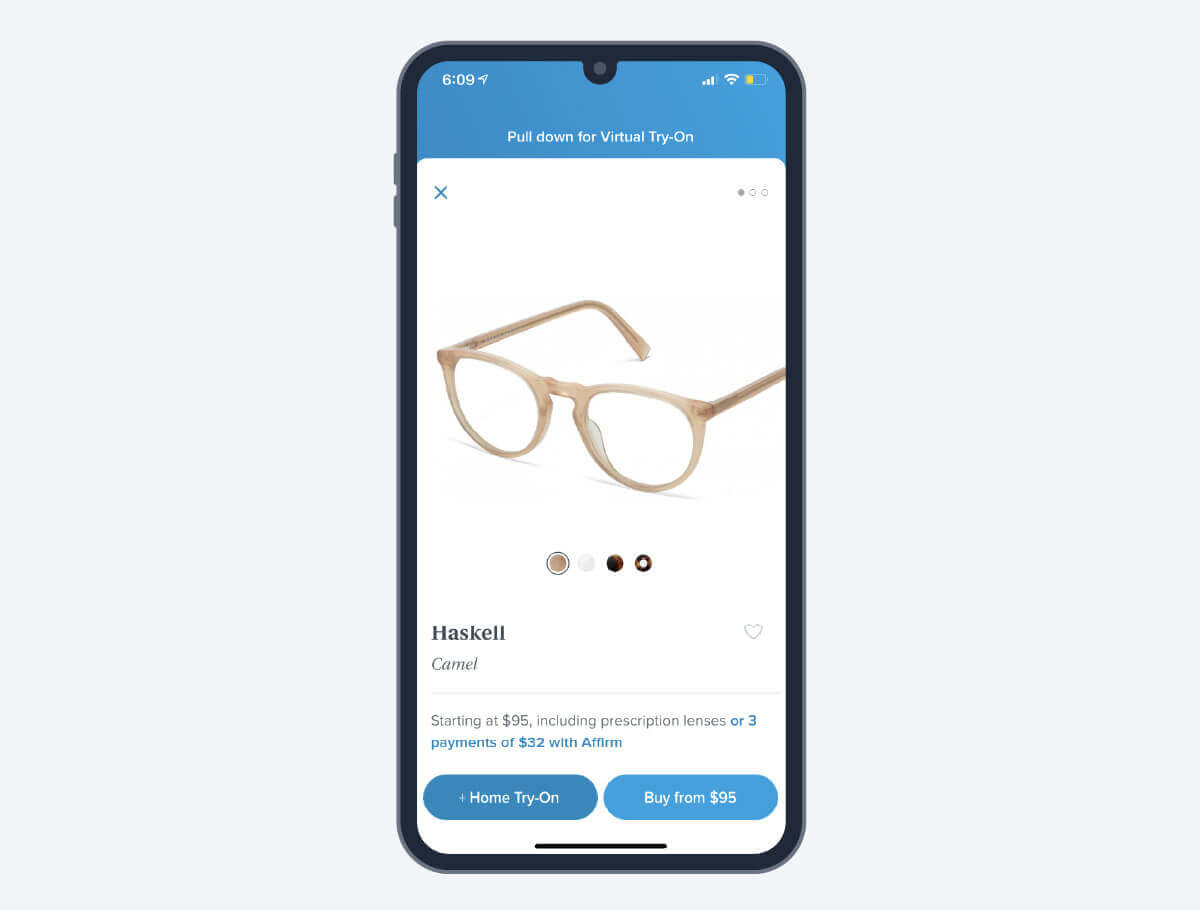
By meeting customers in the comfort of their own homes and offering a physical try-on at no additional cost, Warby Parker draws in customers with tailored online engagement strategies and moves them through the customer journey by providing the benefit of a physical try-on.
With 74% of customers using multiple channels to start and complete a transaction, an omnichannel workflow can help marketers guide customers through the user journey. *
2. Target
Target Circle, a loyalty program available through the Target App, encourages offline customer engagement with a simple value proposition: 1% back guarantee. Target Circle helps the brand gather useful data on customers shopping habits without intruding on their relationship or losing customer trust.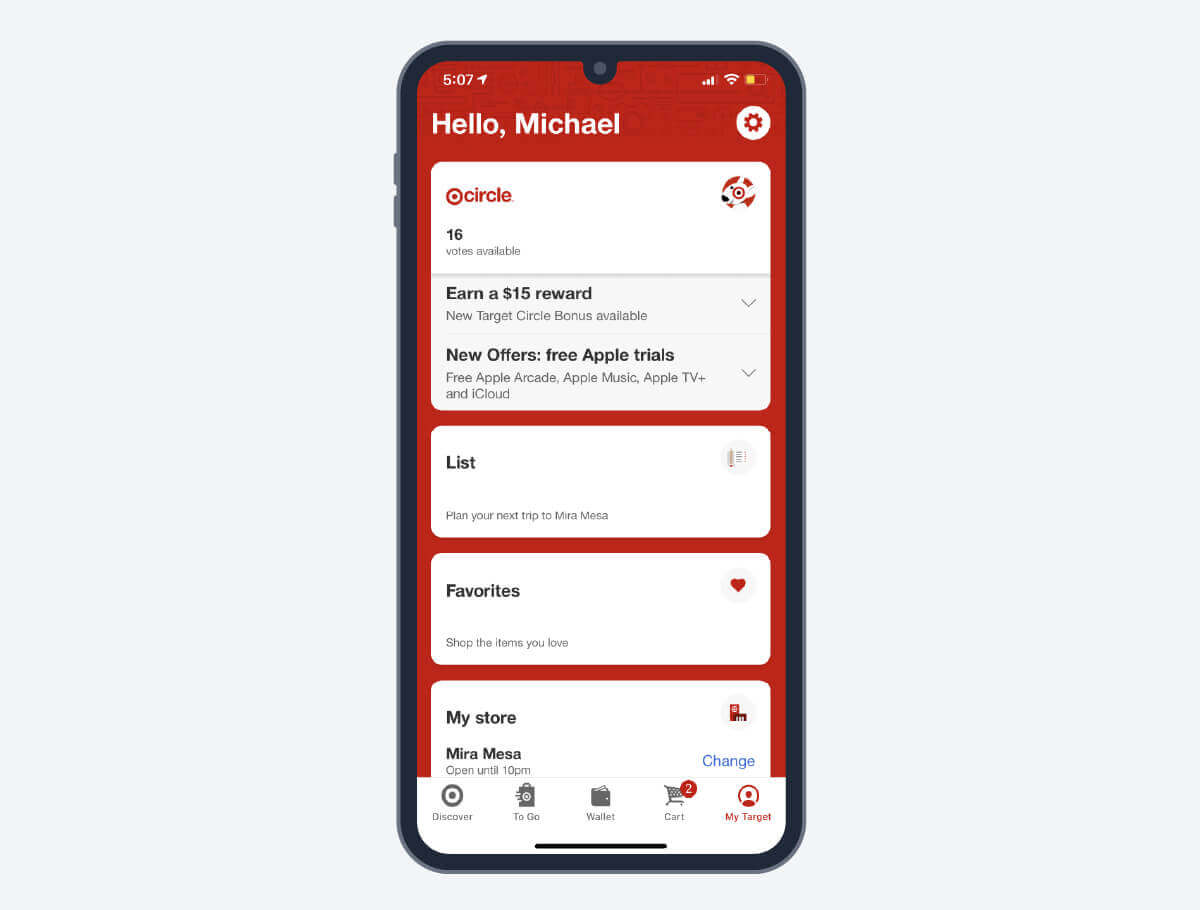
Gathering customer data with a value add can be a great strategy to personalize future content without hurting customer relationships.
3. Starbucks
Starbucks keeps users connected with popular tactics like rewards points, games, and in-store perks. In this example, Starbucks provides a timeline to prompt users to purchase, whether in-person or through the app. In exchange, Starbucks customers get a higher ratio of rewards points for a purchase made within the specified time frame.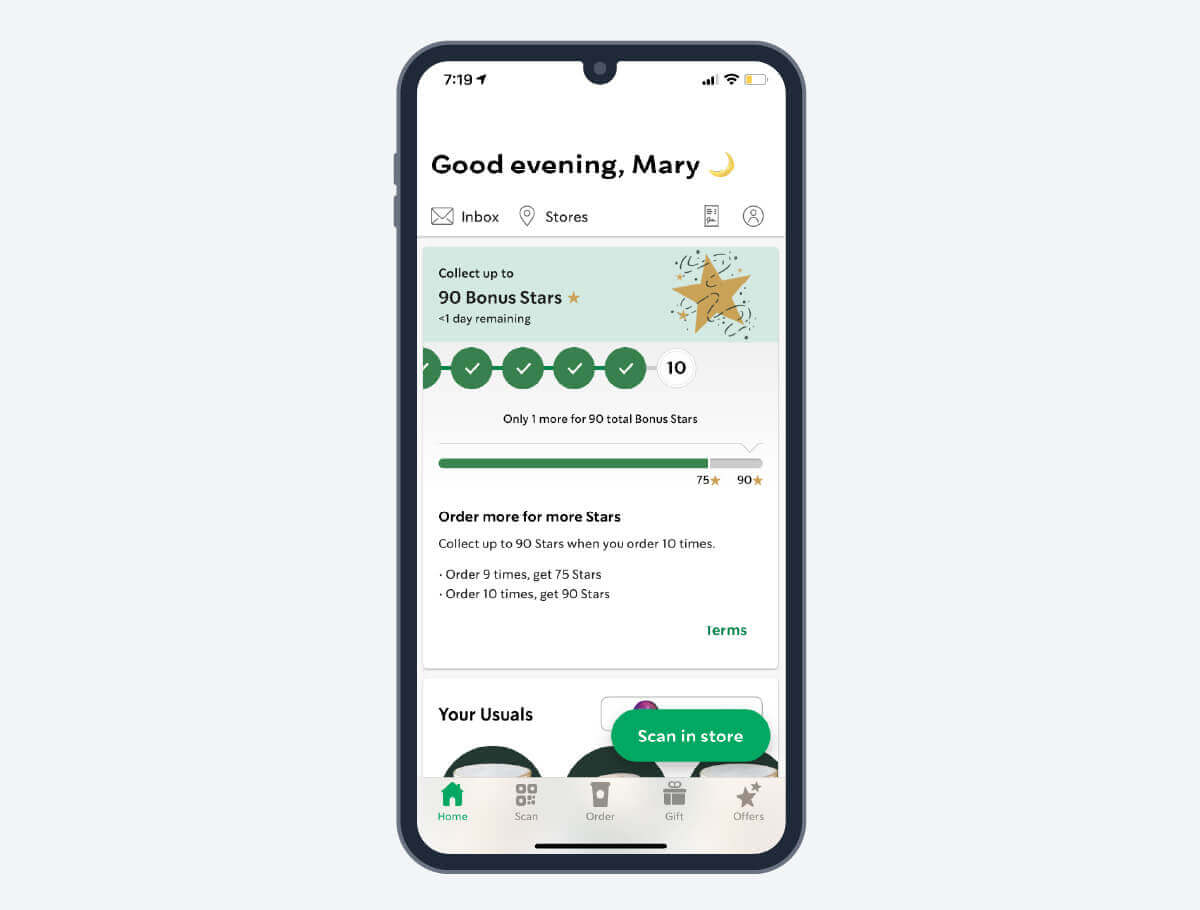
It makes sense why Starbucks is the most popular in-person mobile payment method — with 23 million people making a mobile purchase at least once every six months.*
To keep customers engaged, encourage various micro-touch points throughout your platforms.
4. Uber
Uber reduces friction on the user journey by aggregating data between their apps, namely Uber and Uber Eats. While storing data on your customers is vital for effective personalization, too much may disengage users, seeing as nearly 48% of customers stopped buying from companies because of privacy concerns.*
Uber has a genuine reason to store data like your address (Uber) and eating habits (Uber Eats). By unifying this data, Uber can get a powerful 360°-degree view of their customers. It’s worth picking and choosing the data to store so you can effectively target customers without flagging privacy concerns.
5. CVS
CVS has mastered the art of predicting user needs. From sending prescription reminders to creating an integrated data storage system, their customer engagement strategy puts users first.
CVS consolidates key information about users, so everyone from their pharmacists to their phone support staff can get up to speed without forcing users to repeat information. They excel in relationship building with customers, gaining the top spot in the American Customer Satisfaction Index (ACSI) in 2020.*
Customer Engagement is a Long Game
Whether you’re a billion-dollar corporation or an ecommerce startup, putting your customers first will pay dividends in the long run.
If you want to create an effective omnichannel marketing strategy, sign up for a demo of CleverTap’s mobile marketing tools. Or, learn how to create a lasting engagement strategy with our white papers, webinars, and other resources.
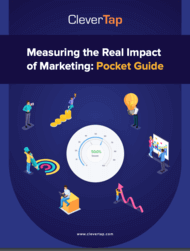
Measuring the Real Impact of Marketing Pocket Guide
Shivkumar M 
Head Product Launches, Adoption, & Evangelism.Expert in cross channel marketing strategies & platforms.
Free Customer Engagement Guides
Join our newsletter for actionable tips and proven strategies to grow your business and engage your customers.















































